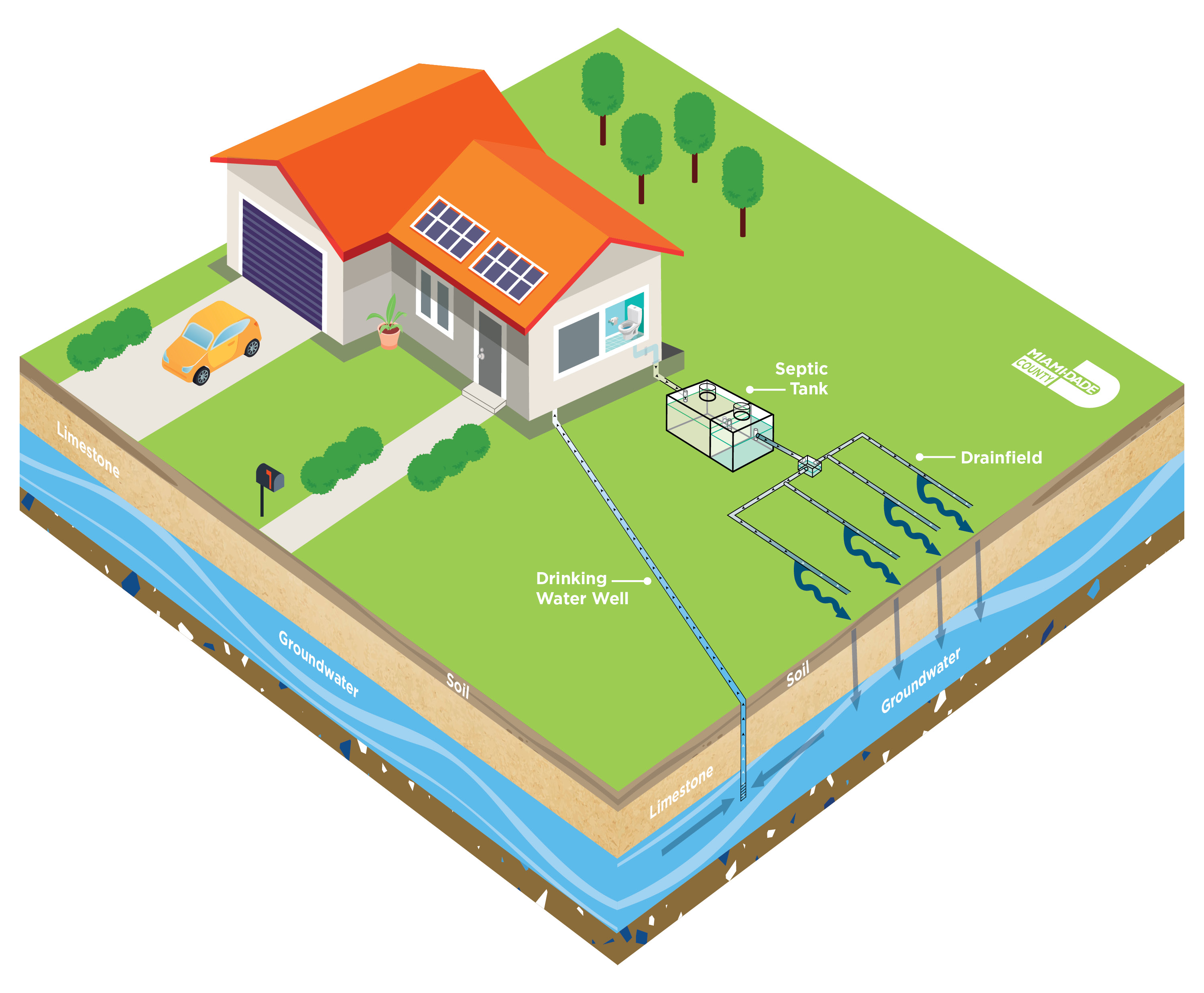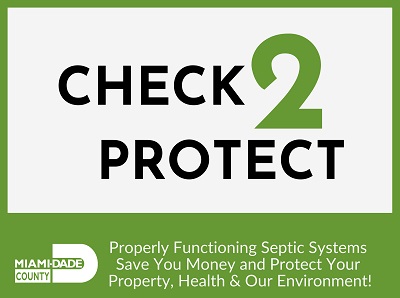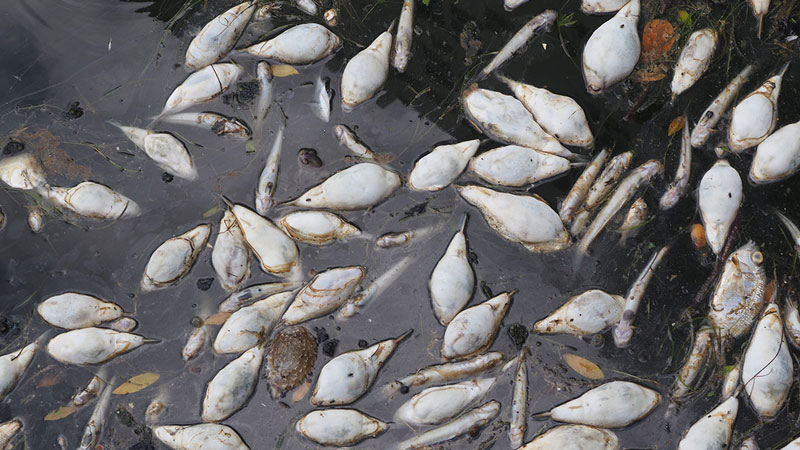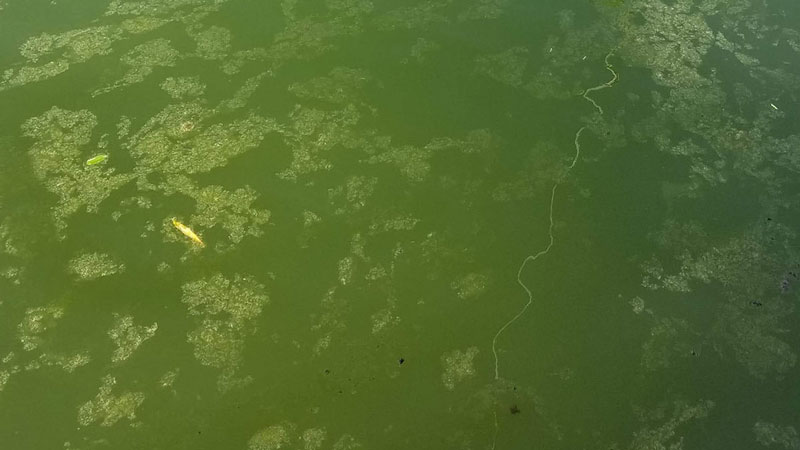Septic System Care
Miami-Dade County has instituted more rigorous standards for new and replacement onsite sewage treatment and disposal systems (OSTDSs), commonly referred to as “septic tanks” or “septic systems.” Read details below, under “New changes to septic system requirements” and at our new Onsite Sewage Treatment & Disposal Systems (OSTDS) webpage”
When public sanitary sewers aren’t yet available in your area, a septic system is the temporary on-site wastewater recycling system that simply treats your wastewater and returns it to the groundwater. Proper maintenance of your septic system will add years to its service life, keep problems at bay and save you money. But when you neglect septic system maintenance, the system is sure to fail and become a threat to your family’s health, to your wallet and to our environment.How to tell if you have a septic system or if you are connected to sewers
- If your property is in unincorporated Miami-Dade County, you can check to see if you are served by the public sanitary sewer system from your computer. Go to the Water and Sewer Department’s iWASD Connect GIS Viewer and enter your address in the search box to see if you are connected to sewers.
- If you are in a municipality, contact your local water and sewer department, or if you receive utility bill for water and/or sewer, review your bill and see if you pay a sewer fee. If you do not, you should have a septic system.
- Consult your construction plans if available or look for clues such as an area of very green and lush grass over a septic system drain field.
Septic systems and how they work

Caring for your septic system
- Inspect and pump system every 3-5 years. The average household septic system should be inspected and pumped out at least every three to five years by a septic system professional, or more often if you suspect problems. Ensure your service professional is a permitted Liquid Waste Transporter.
- Conserve water. The average family of four uses approximately 300 gallons of water per day, and all of that water is sent down your drains and into your septic system. The more water a household conserves, the less water enters the septic system and the more efficient the system operates, reducing the risk of failure or overloading of the drain field. Check out these water-saving tips.
- Properly dispose of waste. Toilets aren’t trash cans! Toilet paper is designed to break down in your septic tank, but everything else, from fats, oils and kitchen grease to bathroom wipes, cannot be digested by the septic system and will clog the tank and drain field, impair proper operation and require costly repairs. Additionally, drain cleaners, floor cleaners, toilet bowl cleaners, paints solvents, waxes, polishes, coating or strippers and other chemicals flushed down your drains can destroy important bacteria in the septic system and can contaminate the ground and our groundwater.
- Be kind to your drain field. Don’t drive or park over your septic system. Traffic over your drain field can crush the pipes or pack down the soil around them, impairing their proper operation, and driving over the septic tank can cause the tank's lid to crack or break apart. Also make sure you keep the soil over your drain field covered with grass, and don’t plant shrubs or trees near your system as growing roots will destroy the tank and drain field.

Septic systems and the health of our environment
Everything that you put into your sink, bathtub, shower drain and toilet discharges into your septic system and then into the surrounding ground and groundwater. The Biscayne Aquifer, also referred to as groundwater or the water table, is the county’s primary source of potable water and is located only a few feet below the ground surface. Any contaminants introduced into your septic system can pollute the ground around your home and the aquifer that holds the water we drink.
Additionally, because our groundwater flows like an underground river at a slow rate towards the ocean, groundwater contamination introduced through septic systems can also pollute water resources such as canals and our treasured Biscayne Bay.
Even when properly cared for, septic systems continually discharge nutrients like nitrates and phosphorous into our water resources. These nutrients migrate through our watershed, affect our drinking water wells and combine with other nutrient pollutants from sources such as fertilizers to cause algae blooms, sea grass dieoffs and fish kills in our bay.


How the County is decreasing nutrient pollution from septic systems
- Completion of the ongoing $126 million Septic to Sewer Commercial Corridors Program, connecting approximately 1,000 commercial properties to sewers
- Implementation of a project funded in part by the Florida Department of Environmental Protection to convert approximately 300 septic systems to sewer service in the Little River Adaptation Action Area
- Installation of public sewer laterals for 12,000 properties with available sewer infrastructure and those that are most vulnerable to rising groundwater
About Us

Regulatory and Economic Resources
Lourdes M. Gomez
Stephen P. Clark Center
111 NW 1st Street,
11th Floor
Miami, FL 33128
305-375-2877 | [email protected]
Herbert S. Saffir Permitting and Inspection Center
11805 SW 26 Street,
Miami, FL 33175
786-315-2000

